Mar 12, 2024
Why Fukui deserves to be on your Japan travel itinerary
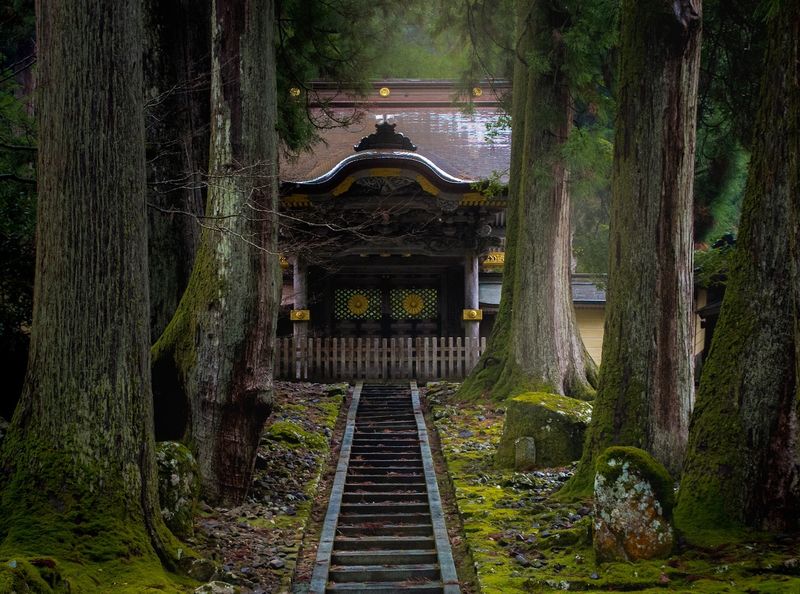
March 16 will see the opening of an extension to the Hokuriku Shinkansen line between the city of Kanazawa in Ishikawa Prefecture and stations in neighboring Fukui Prefecture. Over a decade in the making, the extension will make travel from Tokyo to Fukui Prefecture, in western Japan, possible on a single train service in under three hours.
On the same day as the opening of the extension Japan’s Hokuriku Support Discount travel subsidy program will take effect offering travelers to Fukui (and the greater Hokuriku region) potential discounts on accommodations and travel packages of up to 50 percent. The subsidy program is aimed at giving a boost to the local travel industry in the wake of the Noto Peninsula earthquake which struck neighboring Ishikawa Prefecture on New Year's Day.
We’ve made a number of trips to Fukui Prefecture in recent years in the build up to the arrival of the Hokuriku Shinkansen. The prefecture has much to enjoy. Actually, no, that sounds a bit underwhelming and not reflective of our experiences. Fukui has some amazing locations, sights and experiences which deserve consideration for inclusion on any Japan itinerary.
These are some of our favorite places in Fukui, and we haven’t even been to the dinosaur museum. In no particular order:
Ichijodani Asakura Clan Ruins
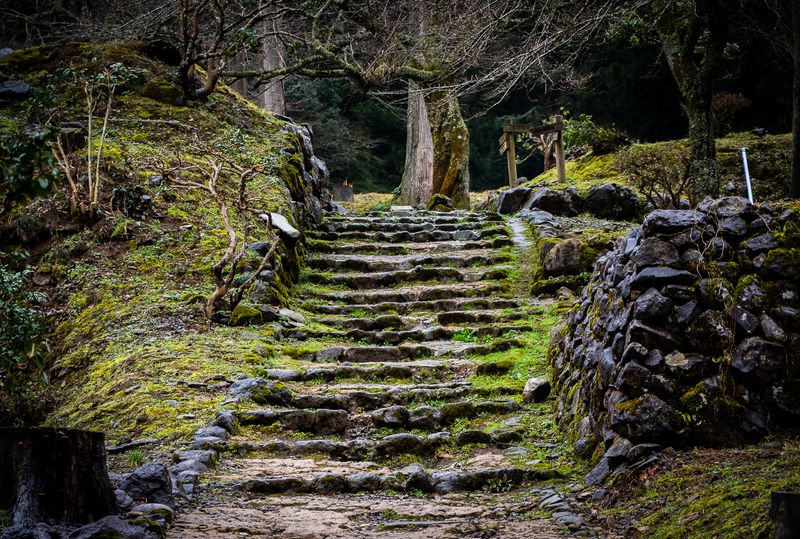
Lace up a sturdy pair of walking shoes and bring plenty of water for a visit to the Ichijodani Asakura Clan Ruins - there’s plenty of ground to cover at this large historical site.
Located in a beautiful green valley in the mountains southeast of Fukui City, the ruins occupy flat ground immediately either side of a river rough and tumbling its way north.
The ruins are what remains of the castle town constructed here by the Asakura clan who ruled this area from 1471 to 1574. The details of the ruins will perhaps be best enjoyed by the specialist - expect lots of grids and floor plans scraped out of the earth. What buildings there are are largely reconstructions and reimaginings of the days when people called this place home.
For the layman, like this visitor, the beauty of a visit to the Ichijodani Asakura Clan Ruins is in their setting. The uncluttered and peaceful valley comes as a breath of fresh air, drifting over the gurgle of the mountain river waters. East of the river the ruins crawl up the gentle mountainside beckoning the explorer between mysterious mounds, ancient stone steps and moss-covered gates.
You can forget the rest of the world here, succumb to the magic of the surroundings and easily lose half a day through your adventures.
I can’t understand why the Ichijodani Asakura Clan Ruins aren’t considered more marquee, but I’m kind of glad of it all the same.
Daihonzan Eiheiji temple
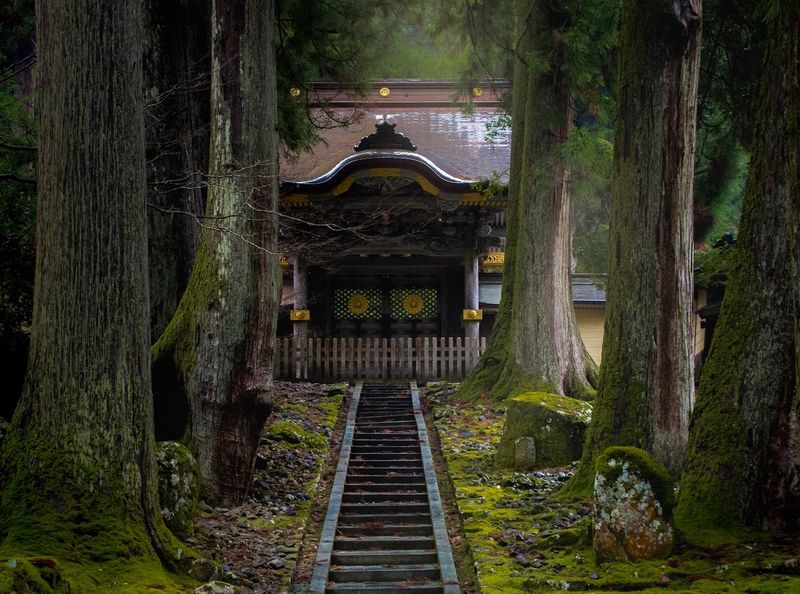
Serious and magnificent Daihonzan Eiheiji temple and its extensive precincts sit in zen repose among giant cedars on a mountainside east of Fukui City. Eiheiji - Temple of Eternal Peace - dates back to the mid-13th century and has all the moss and weather-beaten charm to prove it.
Eiheiji is one of two head temples of Soto Zen in Japan and it appears to take this standing seriously, as do the followers of Zen who come from around the world to practice zazen, a kind of Buddhist meditation, or to use it’s proper term, “just sitting.”
This is a temple apparently rich beyond avarice when it comes to Japanese temple must-haves - ancient moss-covered stones steps and walls, ornate roofs shrouded in mist, gurgling streams, and stolen glimpses of monks padding secretively along wooden corridors. It really is a feast for the eyes and the camera lens, and no filter is required.
It’s probably a good thing then that the priests and practitioners take proper conduct and order seriously here - a commitment to Zen that arguably keeps the selfie stick-toting hordes away, or at least on their best behavior. The day you can get made up in a rental kimono to stroll the grounds snapping up shots for the Insta, is the day that the game is over here. Along with their entrance ticket, visitors will be handed a list of rules and proper conduct.
It’s likely that a visit to Eiheiji will follow a series of outdoor and indoor corridors and staircases to do a circuit of 14 of Eiheiji’s temples and structures, including a requisite gawk at the ceiling of the Sanshokaku reception hall - a mesmerizing collage of some 230 paintings of birds and flowers.
Be sure to explore the paths outside the main precincts, too, particularly those that follow the Eiheiji River, where more moss and captivating mystery awaits.
Echizen Ono
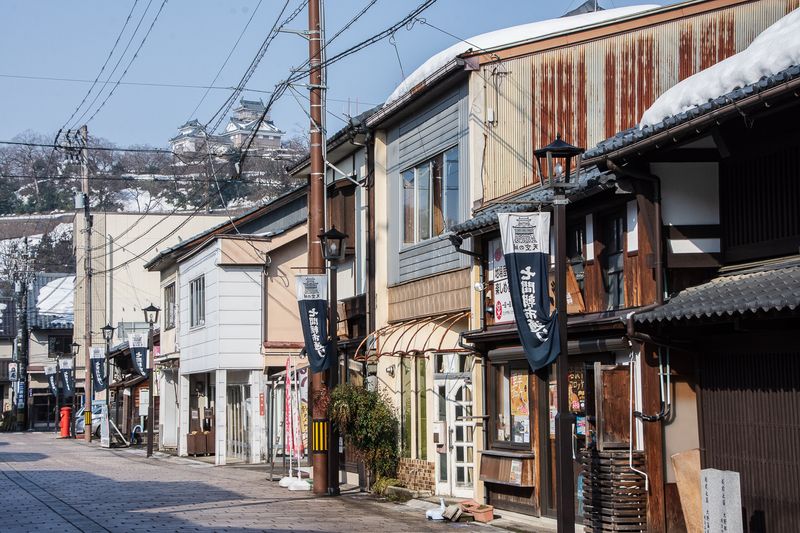
Echizen Ono is home to one of Japan’s most popular social media exports, a photographed townscape mixing restored Edo-era tradition with faded and peeling Showa-era retro. It’s the kind of scene that really pops with the application of a high-definition filter. Or better still, see it with your own eyes.
Shichiken-dori anchors what action there is in the center of the city’s old castle town where you’ll find sake breweries, cottage industry crafts and cafes. And soba restaurants.
Water from the surrounding mountains pours forth from under Echizen Ono’s streets. They call it “oshozu.” It's a prized commodity and is considered some of the finest water in all of Japan. You might see locals filling their containers with it at one of the springs dotted around town. Oshozu lends itself to the making of fine sake and soba noodles. A dish of oroshi soba - soba noodles with grated daikon, chopped leek, bonito flakes and dashi stock - is an essential dining experience in these parts.
Lording over all of this is Echizen Ono Castle, a perky little number perched atop Mt. Kameyama to the west of town. Images of the rising above an ethereal layer of mist are prevalent and have lent the castle its moniker,“castle in the sky.” Spring and autumn are the seasons that offer the best chance to see the castle in this guise.
We were in town in winter and made the mistake of climbing up to the castle from the parking lot at the western base of Kameyama. It was steep and we spent most of the climb knee deep in snow.
Kumagawa-juku
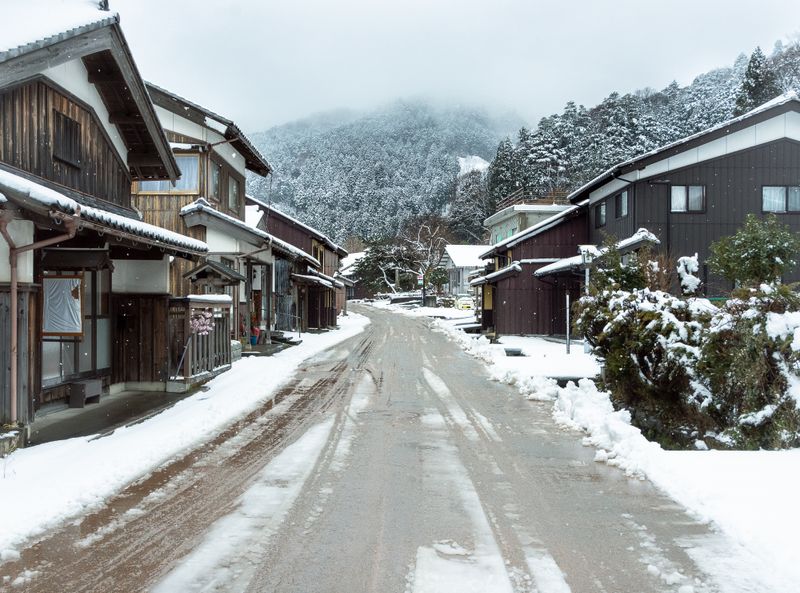
During the Edo Period (1603 - 1868) Kumagawa-juku used to handle traffic shuffling catch (a lot of mackerel) from the waters of Wakasa Bay in the north to Kyoto, in the south. Today the attractive post town seems to handle tourists, for the most part.
Not in winter though when we made our first visit. Carpeted and quiet under a layer of snow, Kumagawa-juku appeared almost ghostly quiet. Ethereal and heartbreakingly beautiful though it was.
In early spring the town had transformed. Shops and cafes were open and spilled out onto the 1.4-km long road that runs through this largely one-road town. The waters of the Maegawa steam sped past on one side, the old townhouses looked glorious on either side, and up above the sky was blue and all was breezy.
We popped into Sol’s Coffee Laboratory to grab a coffee and parked ourselves on a bench outside to watch the foot traffic amble by. In these conditions Kumagawa-juku rewards a stroll, taking time to explore the shops, perhaps taking in a cooking experience, maybe even a ninja experience, and the local museum.
Echizen crafts
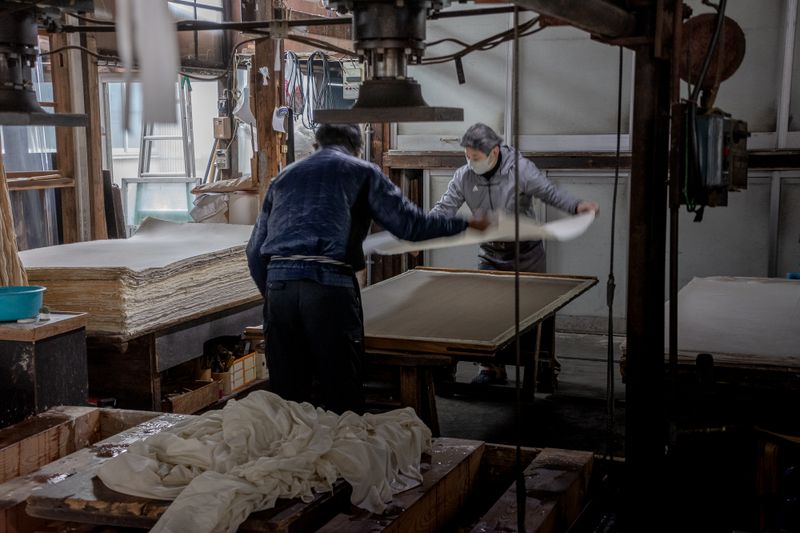
An authentic, traditional Japanese craft experience doesn’t necessarily come easily to the casual traveler but it would be remiss to not point out Fukui’s heavy-weight reputation in Japan for traditional crafts.
The city of Echizen is a center for the production of Fukui’s traditional crafts, perhaps most notably forged knives (uchihamono) and washi, traditional paper.
Japan’s reputation for crafting a razor-sharp blade probably gives Echizen uchihamono the greatest appeal in which case you might want to head to the distinctive form of the Takefu Knife Village, the center of a cooperative association of knife makers. You can see knives being made at the production facility, learn about production history and ogle the finished product (and some of the prices) at the on-site store.
Having interviewed a number of Echizen’s washi papermakers over the years, we perhaps have the greatest attachment to this particular craft.
The Iwamoto district is the center for Echizen washi production. It’s a beautiful spot - all narrow lanes followed by streams and lined with rustic buildings housing paper mills and homes. It's a nice area for a stroll, although not one where you’re likely to find much in the way of shops and cafes.
Stick with it though and pick up the confidence to seek out some of the family-run paper mills here that offer paper-making experiences and have onsite stores where you can get your hands on some gorgeous washi souvenirs and other items.
We’ve visited the following washi paper mills in recent years:
Osada Washi: https://osadawashi.stores.jp/
Igarashi Seishi: https://foodpaper.jp/
Yanase Ryozo Seishijo: https://washi.website/
Make no mistake, Japan does the traditional craft experience really well, combining production centers and facilities with experiences, stores, and sometimes eateries all in the name of showcasing beautiful crafts, strengthening the culture around them, and supporting the people who create them.
You can find wonderful examples of this in Fukui.
Takahama beach scene

(Meikyodo cave, Shiroyama park in the city of Takahama, Fukui Pref.)
I’m not sure that we had ever thought of Fukui as having a beach scene, let alone one that is funky and surfy. That’s what we found in the city of Takahama though, where Wakasa Wada beach is Asia’s first beach to have been awarded Blue Flag status.
We arrived in early autumn with the area still recovering from the short but sudden assault of beach goers that is summer in Japan, with the season’s detritus and wear and tear still on display. Still, it gave the whole area a kind of unkempt charm, and the water looked gorgeous. Next time we come, we should like to camp out at the campsite just off the western end of the beach.
During our visit we contorted our chops around the sizable and sloppy burgers served at Familiar Beach Side Village, a surf-inspired joint overlooking the sands at Wakasa Wada. Our local contact said that the area sees some surf and while we remain skeptical about what kind of wave quality a boardrider can expect in these parts, we’ll know to come and get our wax from the vending machine in Familiar’s parking lot.
About 2 km west of Wakasa Wada beach is Shiroyama park and beach.
Shiroyama park was once the site of Takahama Castle. Today you won’t find much in the way of a castle, but instead there is a small beach, nice ocean views and eight caves dotted about the park’s rocky headland. Some of the caves will need seeking out. Meikyodo will not. It’s right outfront just off the beach, a weather-beaten rock arch through which the horizon beckons.
Spectacular sunsets

Sea of Japan sunsets are spectacular. We enjoyed one in Fukui in the city of Sakai, from the maze of residential streets north of the city's Mikuni port district. Actually, we just kind of planted ourselves outside the entrance of the restaurant we were to eat at and strained through some shrubbery to take in the sunset. It was spectacular nonetheless. Maybe next time we’re in town we’ll see what kind of sunset experience Mikuni Sunset Beach has to offer.
Before nature switches off the lights, the old townscape of Mikuni port rewards exploration with attractive old buildings, some funky cafes, and a seafaring vibe.
Saifukuji temple

The garden at Jodo Buddhist temple Saifukuji is said to represent the Buddhist image of paradise. It’s surely a bold undertaking of any gardener but even if the Saifukuji garden doesn’t quite get there, there’s no doubt that it is beautiful. Especially in autumn, in the rain, as it turns out.
Crossing the small stone bridge between the temple’s shion-style residence into the shoin-style garden (a garden designed to be viewed from a shoin-style residence) is to metaphorically pass into the afterlife. Coming back the other way then represents a rebirth, of a kind.
The garden is recognized by Japan as a Site of Scenic Beauty.
Saifukuji itself dates back over 600 years and sits in a quiet satoyama landscape west of downtown Tsuruga City.
Once you’ve managed to get your head around just how beautiful the garden is, the rest of the temple won’t take long to explore, at least in terms of its scale. To that end, a visit here could be combined with other Tsuruga attractions. We enjoyed a cycle under the pine trees of Kehi no Matsubara park which front an attractive beach.
Cycling the Five Lakes of Mikata
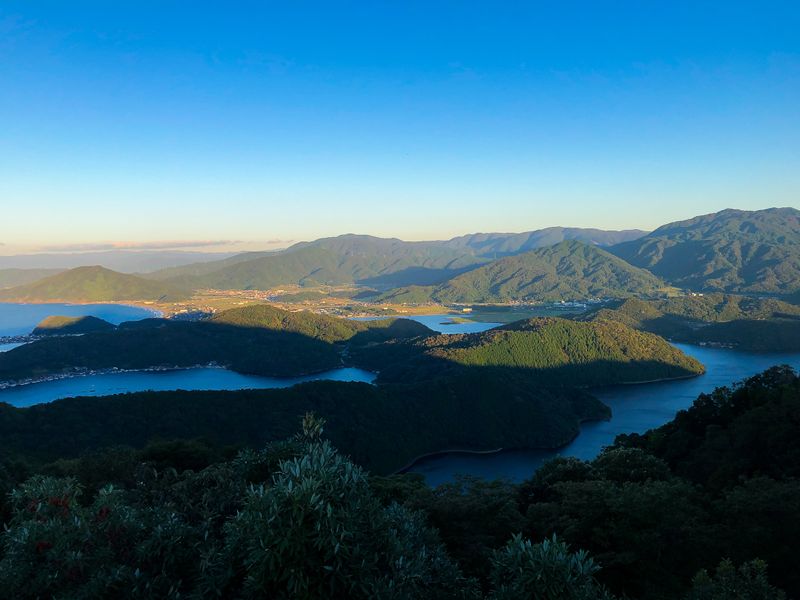
(View over the the Mikata Goko from the Rainbow Line Summit Park, Mihama, Fukui Pref.)
Authorities in Fukui in recent years have been making efforts to develop and promote cycling, developing tours and routes for visitors.
We had the pleasure of following one such tour accompanied by local Lycra-clad enthusiasts with thousands of dollars worth of high-performance tackle between their legs. And while they might have looked like they were kitted out for an assault on Alpe d'Huez, the routes we followed were easy-going and pleasant much of the way.
We particularly enjoyed the leg which saw us peddle our way around the Mikata Goko - the Five Lakes of Mikata - which straddle the towns of Wakasa and Mihama and are located within the Wakasa Bay Quasi-National Park.
The lakes are circumnavigated by quiet roads and cycle-friendly paths which take cyclists away from the frustrations that can come from cars and other motor vehicles.
We peddled through sleepy lakeside fishing villages and between rice fields ready for harvest. At Roadside Station Mikatogoko we packed the bikes into the back of cars and vans and cheated our way up to the lofty (and blustery) heights of the Rainbow Line Summit Park for a view of all five lakes below.
On the ground in Fukui
The extended Hokuriku Shinkansen line will stop at the following stations: Kanazawa, Komatsu, Kaga-Onsen, Awara-Onsen, Fukui, Echizen-Takefu, Tsuruga
While the line will afford easier access to Fukui Prefecture travelers to the region may still find challenges when it comes to “nijikoutsu,” or secondary public transportation which some say is still lacking in the region. Indeed, for our own visits we’ve largely relied on car rentals.
As you can see from the locations we’ve listed above, things in Fukui can be spread out. The region arguably lacks a single, all-encompassing destination at which the traveler can tick off any number of travel experiences with relative ease. While this might be off-putting for the traveler on a tight schedule, it could add to the sense of adventure for those who are up for it.
If you’ve been to Fukui Prefecture, we’d love to hear from you. Share your highlights of the region in the comments.
Related
Fukui’s old traditions, temples await new arrivals with shinkansen extension
Travel subsidy programs in quake-hit Hokuriku region to start March 16



2 Comments
genkidesu
on Mar 13
Really enjoyed it when we went, I think it's an underrated prefecture. We explored by car, too, so I can't speak on the public transport situation. Loved the Tojinbo Cliffs, very scenic. Interested to see how the shinkansen extension promotes tourism in the region, there's a lot of potential for exploration!
City-Cost
on Mar 13
@genkidesu - Thanks for sharing.